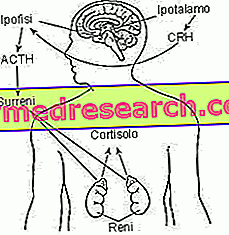What is Homocysteine?
Homocysteine is a sulfur-containing amino acid that is formed following the enzymatic transformation of methionine, another sulfur amino acid found in protein foods (dairy products, meat, legumes, eggs).

Normal values
Normal plasma homocysteine levels: 5-12 µ moles per liter *
To learn more, read: Homocysteine Values
Cardiovascular risk
Dangers of High Values of Homocysteine
Homocysteine is considered an independent risk factor as it alone is able to increase the incidence of cardiovascular diseases regardless of the presence of other predisposing factors. Values above 10-12 µmoles per liter already correlate with an increased risk of atherosclerosis, stroke and myocardial infarction.
As well as cholesterol, homocysteine is associated with an increased risk of cardiovascular disease, but unlike this increases the risk of many other diseases both of the cardiovascular system (venous thrombosis, pulmonary embolism) and not (fetal malformations, mental decay, Alzheimer's, spontaneous fractures).
The concentration of homocysteine in the plasma is due to the interaction of genetic, physiological and acquired factors (diet poor in vegetables, drugs, hereditary diseases, etc.).
If the blood values of homocysteine are higher than the norm, three classes of risk are distinguished:
- moderate (16-30 μmol / L)
- medium (31-100 μmol / L)
- severe (> 100 μmol / L).
Treatment
Prevent and combat high homocysteine
Diet
The body defends itself from the excess of homocysteine thanks to vitamin B9 or folic acid : a micronutrient of mainly vegetable origin that has the ability to neutralize its negative effects. This vitamin, which is also important for avoiding spina bifida during fetal development, is present above all in green leafy vegetables and meat (especially in offal).
However, not all folic acid in food is in a bioavailable form and a large part is lost during cooking or during prolonged exposure to light. Precisely for this reason those who eat in the canteen are predisposed to a deficiency of folic acid and other thermolabile vitamins. The habit of keeping food warm is tending to degrade these vitamins due to prolonged exposure to heat.
In the Italian population the levels of daily intake of folic acid are slightly lower than those recommended, for this reason it is good to consume adequate amounts of fruit and vegetables every day (at least 5 or 6 portions).
FOLIC ACID, recommended daily intake levels: 200-1000 mcg
Bringing homocysteine back to the right levels is therefore possible and even easy after all.
To learn more, read: Diet for High Homocysteine
Supplements
Indeed, the daily supplementation of 0.5-5 mg of folic acid reduces blood homocysteine levels by 25%. The association with vitamin B12 further reduces (approximately 7%) the values of circulating homocysteine. These supplements are particularly suitable for those who have a high cardiovascular risk due to:
- smoking
- hypertension
- sex (greater in males up to 50 years)
- old age
- genetics
- obesity (particularly the abdominal one)
- sedentary
- high cholesterol
- diabetes
In any case, unless important genetic diseases are present, it is sufficient to adjust one's diet in order to increase the intake of folic acid, thus avoiding the use of supplements. Folic acid supplementation is, however, devoid of side effects, as water-soluble vitamin B9 is therefore eliminated via the urine if present in excess.
| Factors that increase homocysteine levels | Factors that decrease homocysteine levels |
male sex (+) aging (+) increase in muscle mass (+) smoke (+) coffee (+) folate deficiency (+++) | physical activity (-) balanced diet rich in foods of plant origin (-) |
Vitamin B6 and vitamin B12, both contained in foods of animal origin, also protect the body from excessive levels of homocysteine.
However, the intake of these vitamins should only be considered as one of the many aspects of the diet. In particular to prevent cardiovascular diseases it is good:
- consume foods rich in fiber (at least 5-6 portions of fruit and vegetables per day)
- replace the meat with fish at least three times a week
- replace the meat with pulses at least three times a week
- limit the consumption of saturated fats (butter, sausages, fatty meats and cheeses, palm oil)
- prefer mono and polyunsaturated fats (olive oil, seed oil, fish oil)
| Vitamin B6 | Fish, poultry, lean meats Bananas, prunes, avocado Whole grains Dried beans |
| Vitamin B12 | Seafood Milk, meat and dairy products |
| Folic acid | Green leafy vegetables (broccoli, peas, spinach, lettuce) Cereals, peanuts Beans, lentils oranges |
| Betaine | Sugar beet, seaweed, seafood, broccoli, cereals. |
Is integration really useful?
NOTE: in the literature there are several studies that - while reiterating the usefulness of integrating the aforementioned vitamins in reducing serum levels of homocysteine - diminish the protective effect against cardiovascular diseases. In practice, therefore, despite the reduction of homocysteinemia, supplementation of these vitamins may not be so effective in preventing the associated cardiovascular diseases.



